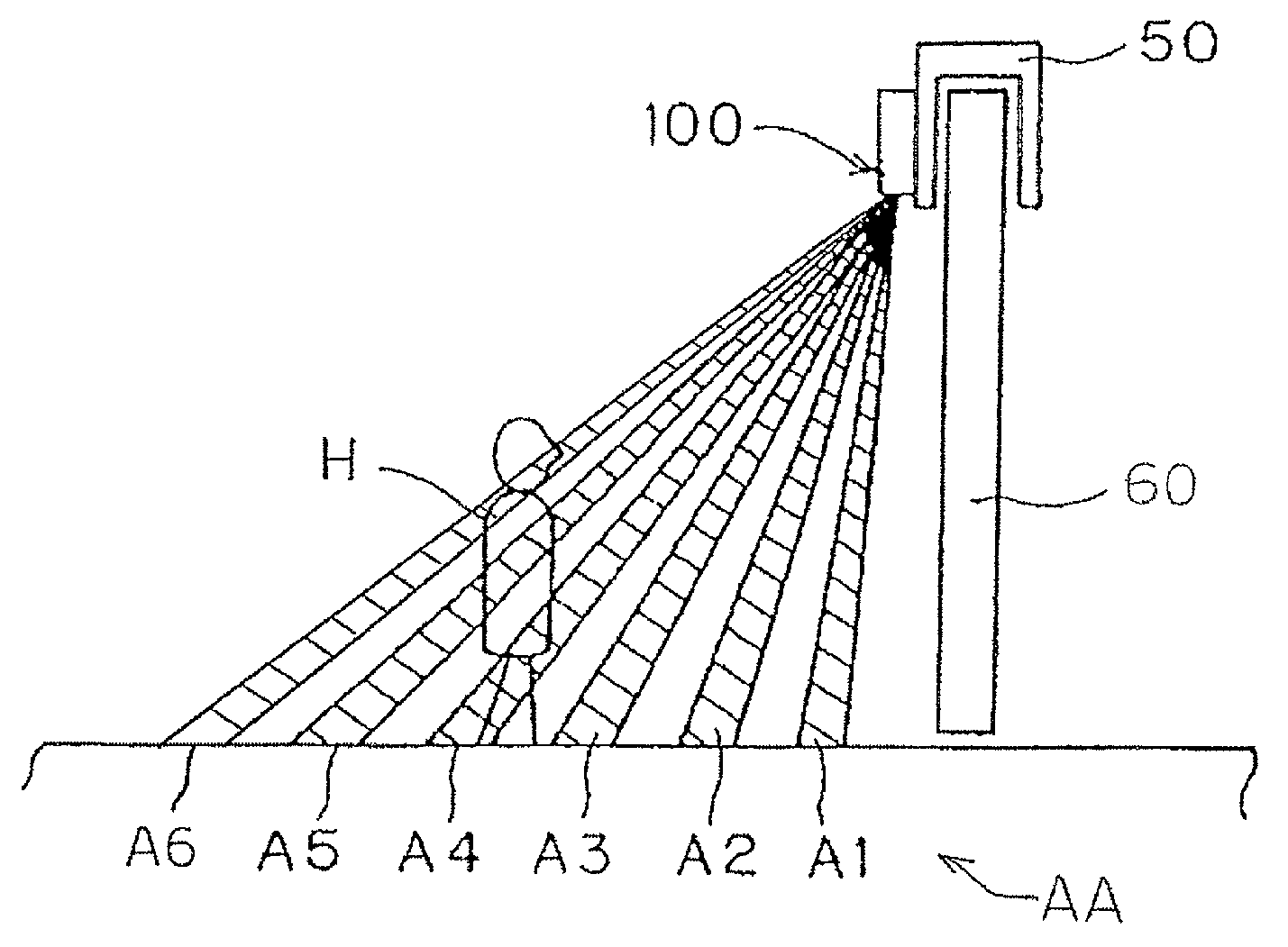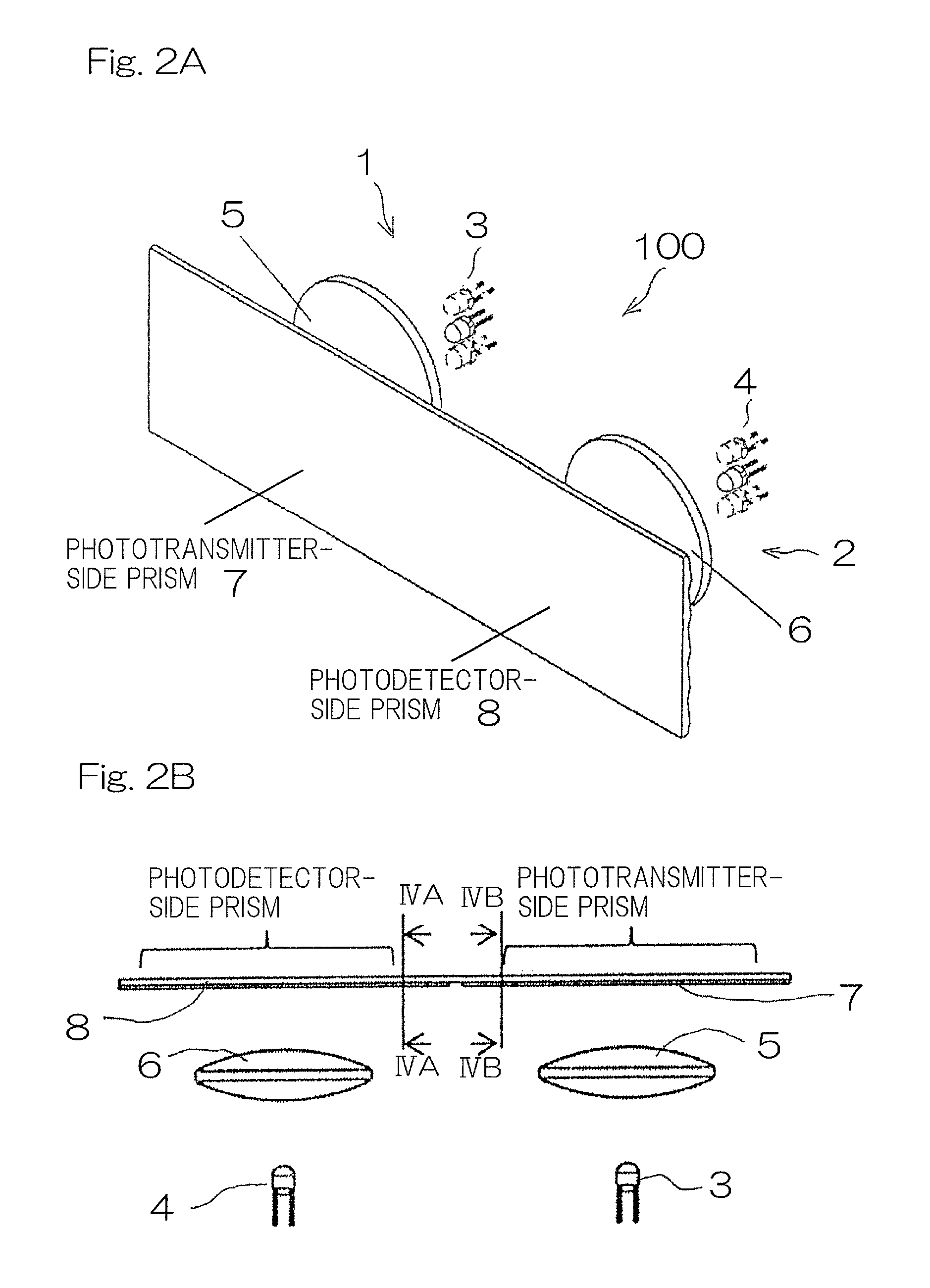Active object detection sensor
a detection sensor and active object technology, applied in the direction of optical radiation measurement, instruments, measurement devices, etc., can solve the problems of low detection sensitivity for the distant division area, difficult detection, and low detection sensitivity, so as to achieve balance in sensitivity and s/n ratio, improve detection performance
- Summary
- Abstract
- Description
- Claims
- Application Information
AI Technical Summary
Benefits of technology
Problems solved by technology
Method used
Image
Examples
Embodiment Construction
[0034]Hereinafter, one embodiment of the present invention will be described with reference to the drawings. FIG. 1 illustrates a detection area AA, as viewed from a sliding direction of an automatic door 60, in the case of an active object detection sensor 100 for use in an automatic door being used for starting an opening / closing controller of the automatic door, according to one embodiment of the present invention. As shown in FIG. 1, the active object detection sensor 100 is provided in a transom 50, and the detection area AA is formed by six lines of division areas A1 to A6 in the longitudinal direction, from a position close to the sensor 100 toward a position distant from the sensor 100. In the detection area AA, an object such as a human body H is detected. It is to be noted that a plurality of division areas are formed also in the lateral direction for each of the division areas A1 to A6 of the six lines, which lateral division areas are not shown. The plurality of areas in...
PUM
 Login to View More
Login to View More Abstract
Description
Claims
Application Information
 Login to View More
Login to View More - R&D
- Intellectual Property
- Life Sciences
- Materials
- Tech Scout
- Unparalleled Data Quality
- Higher Quality Content
- 60% Fewer Hallucinations
Browse by: Latest US Patents, China's latest patents, Technical Efficacy Thesaurus, Application Domain, Technology Topic, Popular Technical Reports.
© 2025 PatSnap. All rights reserved.Legal|Privacy policy|Modern Slavery Act Transparency Statement|Sitemap|About US| Contact US: help@patsnap.com



